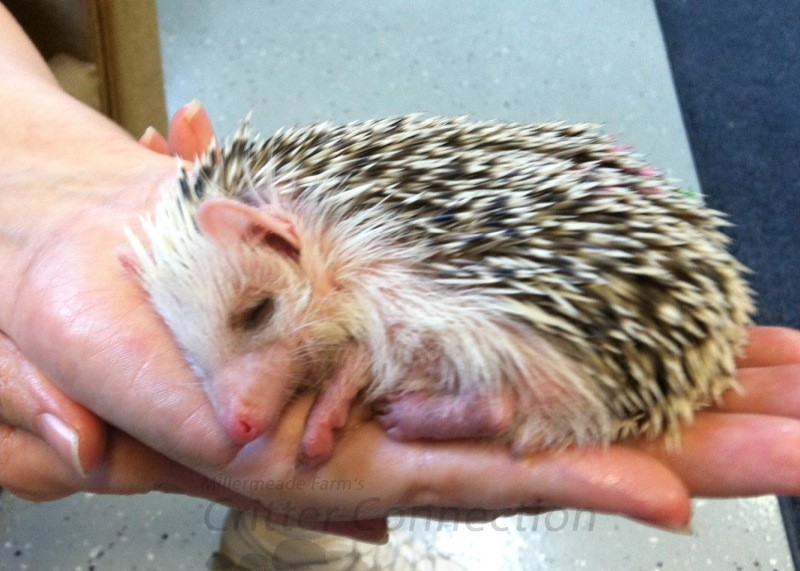Last Updated on November 8, 2022.
- Anesthesia is an induced state of unconsciousness in animals.
- Veterinarians may anesthetize your hedgehog to examine it thoroughly or during a procedure that requires the hedgehog to remain still.
- Anesthesia is also necessary for surgery.
- Three components are involved in this process: analgesia (pain relief), amnesia (loss of memory), and immobilization
- Within the components there are numerous stages
- Stage 1: (voluntary excitement): heart rate and respiratory rate increase; this is usually where the animal will struggle in confusion
- Stage 2: (involuntary excitement): Loss of consciousness
- Stage 3: General anesthesia
- Plane 1: light anesthesia (reflexes are still present)
- Plane 2: medium anesthesia (surgical level with muscles relaxed)
- Plane 3: deep anesthesia (breathing endangered)
- Plane 4: too deep (diaphragm is paralyzed)
- Stage 4: (irreversible anesthesia): respiratory arrest
- Recovery stages work in reverse from stage 4 back to stage 1
- The preferred method in small animals is isoflurane gas
- This is done in induction chamber than switched to a face mask for maintenance
- Endotracheal intubation is nearly impossible
- The smaller trachea of hedgehogs makes it difficult to tube the animals unlike cats and dogs
- Injectable agents can also be used though not as popular
- Ketamine can be used alone or in combination with diazepam (intramuscular)
- Tiletamin/zolazepam in combination
- Halothane and methoxyflurane are used for shorter procedures, but isoflurane is preferred for longer procedures
- Patient physical condition is usually used as the primary method for determining the method of anesthesia
For more information: Pharmacology- intravenous anesthetic agents and dissociatives A lecture by Lyon Lee DVM PhD DACVA Intravenous Anesthetic Agents (westernu.edu)
or Small Animal Anesthesia Guide by Robert Stein DVM Anesthesia Guide for small animals in Veterinary medicine – SMALL ANIMAL ANESTHESIA GUIDE Dr. Bob – StuDocu






